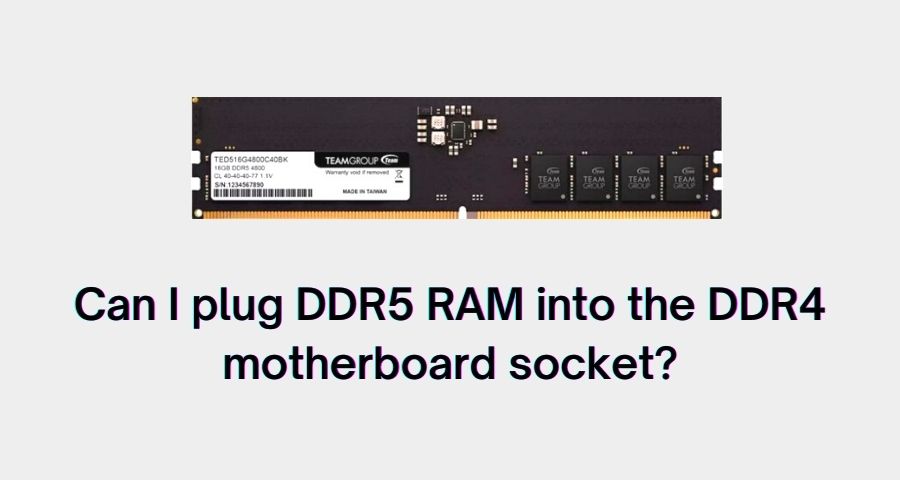How to Fix Discord Error: 'Installation Has Failed'

DDR5 RAM is the most recent RAM technology on the market. Only a few laptops and computers on the market today have a DDR5 RAM slot on the motherboard.
Now you're wondering how to improve system performance, and the simplest way is to upgrade your memory. The most recent memory available is DDR5 RAM, and you're wondering if DDR5 RAM is compatible with your old DDR4 RAM-based Motherboard. Then my answer will be emphatic No.
DDR4 and DDR5 are not compatible with each other so you cannot plug DDR5 RAM into DDR4 RAM.
Motherboards can only support one type of memory technology: DDR3, DDR4, or DDR5.So, in order to use DDR5 RAM, your motherboard must have a DDR5 RAM slot. As a result, we can conclude that DDR5 RAM and DDR4 slot motherboards are incompatible. They are incompatible for a variety of reasons.
DDR4 and DDR5 "Key Notch" positions are slightly different and do not align with each other. On DDR5 modules, it is slightly to the left, and it is provided notches in various locations to prevent incorrect insertion. As a result, the sockets for DDR4 RAM and DDR5 RAM are distinct. As a result, we cannot use DDR5 RAM in a DDR4 Socket and vice versa.
However, the number of pins for both DDR4 and DDR5 RAM is the same, i.e. 288. Though the pin counts are the same, the command and address buses in DDR5 RAM are shrunk and partitioned differently. So, DDR5-based RAM requires a DDR5-based motherboard and DDR4-based RAM requires DDR4 supported motherboard.
Conclusion: No. You can't even physically insert the DDR5 RAM card in the DDR4 Motherboard because the locator notch in the two technologies is different.
DDR4 and DDR5 operation voltages differ. DDR4 RAM has an operating voltage of 1.2V, while DDR5 RAM has an operating voltage of 1.1V. As a result, the power supply for DDR4 slots in motherboards should be 1.2V, and if it is physically possible to connect DDR5 RAM in DDR4 slots, your DDR5 RAM may be damaged due to a 0.1V voltage excess supply to it.
According to reports, voltage regulation parts for DDR5 RAM have been moved from the motherboard to the individual RAM stick, making each DIMM responsible for its own voltage regulation. As a result, each DIMM should now have its own voltage regulator circuit. As a result, the motherboard and CPU socket must be designed accordingly. As a result, existing DDR4 Sockets do not support DDR5 RAM.So, DDR5 RAM is not compatible with DDR4 Socket (even if DDR5 RAM fits in DDR4 Socket).
DDR5 required 1.1 Volt and DDR4 required 1.2 Volt.
Memory bandwidth refers to how quickly data can be retrieved from or written to a memory stick. DDR5 RAM is said to have a frequency double that of DDR4 RAM.DDR4 has a maximum support of up to 3.2 gigabits per second per pin. DDR5 has a maximum support of 6.4 Gigabits per second per pin.
DDR4 RAM operates at frequencies ranging from 1600MHz to 3200MHz (Overclocked not included) whereas DDR5 memory operates at speeds ranging from 3200Mhz to 6400Mhz (Overclocked not included)As a result, the processor and motherboard should be designed in such a way that they can support DDR5 frequencies.
The processor and motherboard should be designed with the DIMM channel architecture of the RAM in mind. Current processors and motherboards are not designed to work with DDR5 DIMM architecture, which states that each DIMM has a left and right side served by an independent 40-bit wide channel.
DDR4 and DDR5 are not compatible with each other.